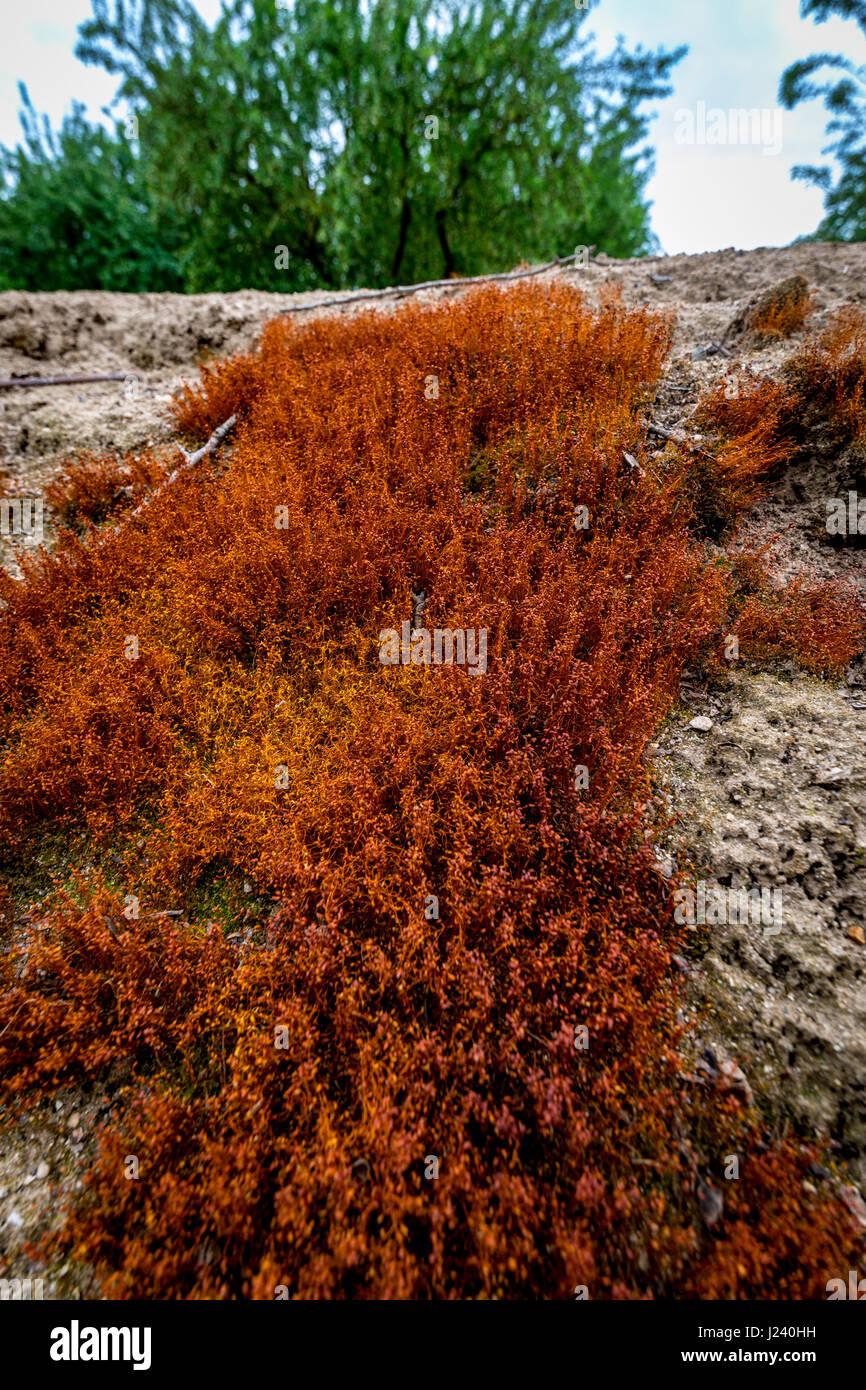
a-bryum-capillare-moss-growing-in-a-california-san-joaquin-valley-J240HH.jpg from: https://www.alamy.com/stock-photo-a-bryum-capillare-moss-growing-in-a-california-san-joaquin-valley-139000557.html
Introduction
In the vast and captivating world of bryophytes, one particular moss species stands out for its striking beauty and fascinating characteristics: Bryum erythrocaulon (Schwägr.) Brid., commonly known as Bryum. This unassuming yet remarkable plant belongs to the Bryaceae family and has captured the hearts of moss enthusiasts worldwide.
Background
Before delving into the intricacies of Bryum erythrocaulon, it’s essential to understand the broader context of bryophytes. These non-vascular plants, which include mosses, liverworts, and hornworts, are among the oldest and most resilient life forms on Earth. They play crucial roles in various ecosystems, acting as pioneers in colonizing new environments and contributing to soil formation and water retention.
Main Content
Morphology and Identification
Bryum erythrocaulon is a striking moss species that captivates with its vibrant colors and delicate structure. Its stems are typically reddish-brown, giving rise to the specific epithet “erythrocaulon,” which translates to “red stem” in Greek. The leaves are lanceolate in shape, with a distinctive reddish-brown tinge at the base, gradually transitioning to a deep green hue towards the tips.
One of the most remarkable features of this moss is its sporophyte, which consists of a slender seta (stalk) topped by a capsule (spore case). The capsule is pendulous (hanging down) and elongated, often with a reddish-brown tinge that complements the stem’s coloration.
Global Distribution and Habitat
Bryum erythrocaulon is widely distributed across various regions of the world, including Europe, Asia, North America, and parts of South America. It thrives in a diverse range of habitats, from moist and shaded areas in forests and woodlands to rocky outcrops and disturbed soils.
This moss species is particularly well-adapted to acidic and nutrient-poor environments, making it a common sight on decaying logs, tree bases, and soil banks. Its ability to colonize these challenging habitats is a testament to its resilience and adaptability.
Ecological Roles and Adaptations
Like many bryophytes, Bryum erythrocaulon plays a vital role in its ecosystem. It contributes to soil formation and water retention, creating favorable conditions for other plants to thrive. Additionally, this moss serves as a microhabitat for various invertebrates, providing shelter and sustenance for these tiny creatures.
One of the remarkable adaptations of Bryum erythrocaulon is its ability to tolerate desiccation. During periods of drought, the moss can enter a state of dormancy, reviving itself when moisture becomes available again. This remarkable trait allows it to survive in environments with fluctuating water availability.
Case Studies/Examples
In a recent study conducted in a temperate forest ecosystem, researchers found that Bryum erythrocaulon played a crucial role in facilitating seedling establishment of certain tree species. The moss’s ability to retain moisture and create a favorable microclimate contributed to the successful germination and growth of these seedlings.
Another fascinating example comes from a urban green roof project, where Bryum erythrocaulon was intentionally introduced as part of a diverse moss community. Its resilience and ability to thrive in harsh conditions made it an ideal candidate for this sustainable initiative, helping to regulate temperature, absorb rainwater, and enhance the overall biodiversity of the green roof ecosystem.
Technical Table
| Characteristic | Description |
|---|---|
| Scientific Name | Bryum erythrocaulon (Schwägr.) Brid. |
| Family | Bryaceae |
| Common Name | Bryum |
| Growth Form | Acrocarpous moss |
| Stem Color | Reddish-brown |
| Leaf Shape | Lanceolate |
| Leaf Color | Reddish-brown at base, deep green towards tips |
| Sporophyte | Slender seta with pendulous, elongated capsule |
| Capsule Color | Often reddish-brown |
| Habitat | Moist and shaded areas, rocky outcrops, disturbed soils |
| Distribution | Europe, Asia, North America, parts of South America |
| Adaptations | Tolerates desiccation, colonizes acidic and nutrient-poor environments |
Conclusion
Bryum erythrocaulon, with its striking colors, delicate structure, and remarkable adaptations, is a true marvel of the bryophyte world. From its vital ecological roles to its ability to thrive in challenging environments, this moss species serves as a testament to the resilience and beauty of nature’s smallest wonders.
As we continue to explore and appreciate the intricate tapestry of life on our planet, let us ponder this thought-provoking question: How can we better protect and preserve the often-overlooked yet invaluable bryophyte communities that play such crucial roles in our ecosystems?